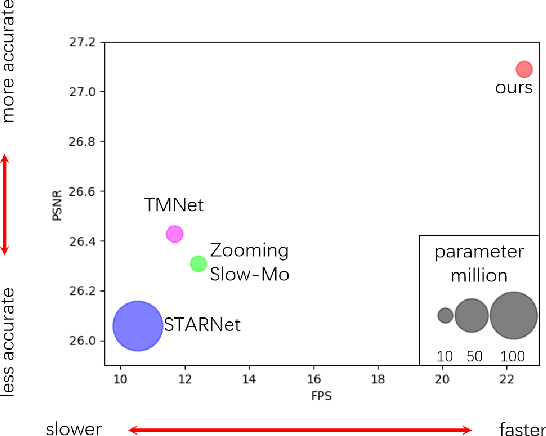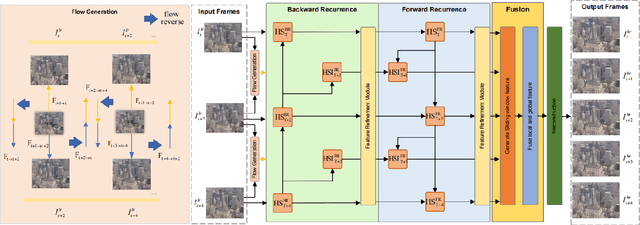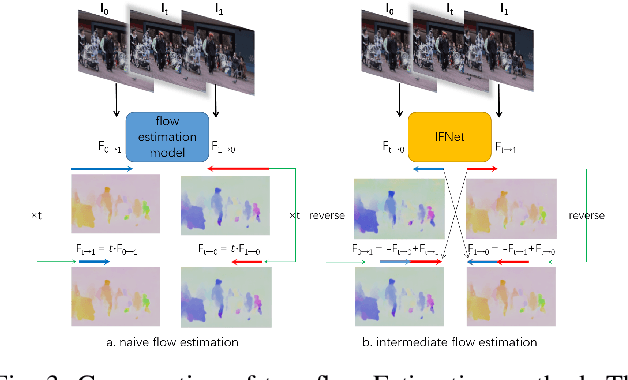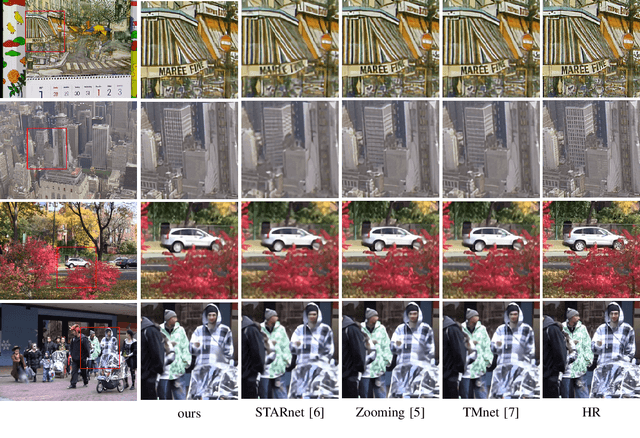Optical-Flow-Reuse-Based Bidirectional Recurrent Network for Space-Time Video Super-Resolution
Paper and Code
Oct 13, 2021



In this paper, we consider the task of space-time video super-resolution (ST-VSR), which simultaneously increases the spatial resolution and frame rate for a given video. However, existing methods typically suffer from difficulties in how to efficiently leverage information from a large range of neighboring frames or avoiding the speed degradation in the inference using deformable ConvLSTM strategies for alignment. % Some recent LSTM-based ST-VSR methods have achieved promising results. To solve the above problem of the existing methods, we propose a coarse-to-fine bidirectional recurrent neural network instead of using ConvLSTM to leverage knowledge between adjacent frames. Specifically, we first use bi-directional optical flow to update the hidden state and then employ a Feature Refinement Module (FRM) to refine the result. Since we could fully utilize a large range of neighboring frames, our method leverages local and global information more effectively. In addition, we propose an optical flow-reuse strategy that can reuse the intermediate flow of adjacent frames, which considerably reduces the computation burden of frame alignment compared with existing LSTM-based designs. Extensive experiments demonstrate that our optical-flow-reuse-based bidirectional recurrent network(OFR-BRN) is superior to the state-of-the-art methods both in terms of accuracy and efficiency.
 Add to Chrome
Add to Chrome Add to Firefox
Add to Firefox Add to Edge
Add to Edge